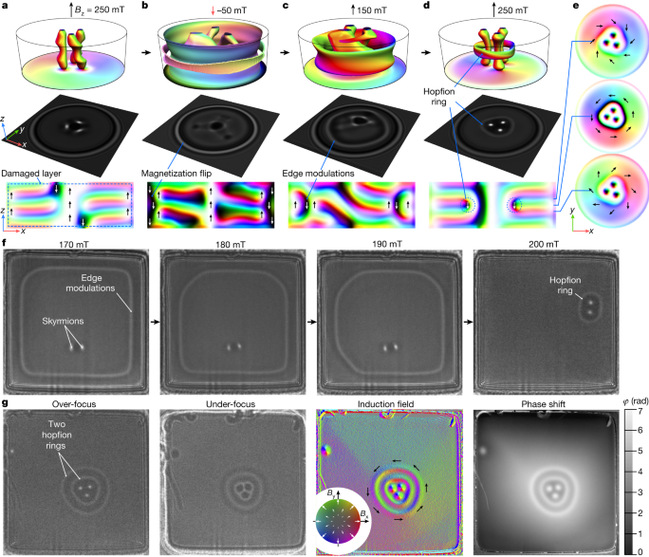Recently, Dr. Fengshan Zheng, together with Dr. Nikolai S. Kiselev and Professor Stefan Blügel from the Peter Greenberg Institute, Jülich Research Center, Dr. Filipp N. Rybakov from Uppsala University in Sweden, Dr. Yang Luyan from Beijing University of Technology and Dr. Shi Wen, Professor Rafal E. Dunin-Borkowski from the Ernst Ruska-Center, Jülich Research Center, discovered magnetic hopfions experimentally for the first time. The relevant results were published in Nature, 'Hopfion rings in a cubic chiral magnet'.

Hopfion is named after the German mathematician Heinz Hopf. The concept of topological solitons can be traced back to first proposed by the British physicist Tony Skyrme in 1962. In 2009, scientists discovered a topological soliton in magnets for the first time, and it was named after Skyrme, Skyrmions.
It is generally believed that magnetic skyrmions are two-dimensional vortex-like spin structures, penetrating from the upper surface to the bottom surface of the sample, thus forming a skyrmion string. In principle, if the two ends are connected, a type of three-dimensional topological magnetic solitons - magnetic hopfions - will be then formed. But so far, no experimental evidence has shown the existence of magnetic hopfions.
The joint team used magnetic imaging in transmission electron microscopy and micromagnetic calculations to identify hopfions coupled to skyrmion strings in cubic iron-germanium alloys, and provided a reliable and highly reproducible experimental protocol to nucleate such hopfion rings. This protocol changes the direction of the external magnetic field while ensuring that the magnetic field is weak enough to maintain the skyrmion string intact, and also ensure that the magnetic field is strong enough to change the magnetic state at the edge of the sample. By switching the magnetic field back and forth, this edge-modulated closed magnetic structures will be generated and pushed towards the center, and by further increasing the magnetic field, hopfions coupled with skyrmion strings will be then formed.
This study also provides a unified homotopy classification of skyrmion-hopfion, and deeply explores the diversity of topological solitons in chiral magnets. This breakthrough provides new ideas for the future development of magnetic materials, spintronics and non-traditional computing, and also provides strong support for the design and development of new functional devices.
This report was also commented on by News/Views in the same period with a special article "Magnetic hopfion rings in new era for topology".
Link:https://doi.org/10.1038/s41586-023-06658-5
NatureNews/Views: https://doi.org/10.1038/d41586-023-03502-8

Figure:Firstexperimentalevidenceofhopfioninacubicchiralmagnet

 中文
中文



